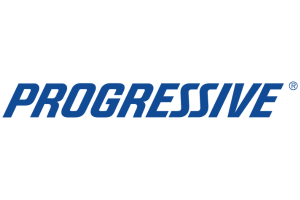How much is health insurance for a 45 year-old female?
Are you a 45-year-old female wondering about the cost of health insurance? Discover the factors that influence premiums and find out how much you may expect to pay for coverage in this insightful article.
Read more Secured with SHA-256 Encryption






Find the Lowest Car Insurance Rates Today
Quote’s drivers have found rates as low as $42/month in the last few days!




Table of Contents
Table of Contents


Insurance Content Managing Editor
Daniel S. Young began his professional career as chief editor of The Chanticleer, a Jacksonville State University newspaper. He also contributed to The Anniston Star, a local newspaper in Alabama. Daniel holds a BA in Communication and is pursuing an MA in Journalism & Media Studies at the University of Alabama. With a strong desire to help others protect their investments, Daniel has writt...
Daniel S. Young


Licensed Insurance Producer
Dani Best has been a licensed insurance producer for nearly 10 years. Dani began her insurance career in a sales role with State Farm in 2014. During her time in sales, she graduated with her Bachelors in Psychology from Capella University and is currently earning her Masters in Marriage and Family Therapy. Since 2014, Dani has held and maintains licenses in Life, Disability, Property, and Casualt...
Dani Best
Updated January 2025
In today’s world, having health insurance is essential for ensuring that you have access to the medical care you need. However, the cost of health insurance can vary significantly depending on various factors. If you are a 45-year-old female, you may be wondering how much health insurance will cost you. In this article, we will explore the factors that can affect health insurance costs and provide some insights into the average cost of health insurance for someone in your demographic. We will also offer some tips on how to reduce health insurance costs and answer some frequently asked questions about health insurance for middle-aged women.
Understanding Health Insurance
Before delving into the specifics of health insurance costs, it is essential to have a clear understanding of what health insurance is. Health insurance is a contractual arrangement between you and an insurance provider that helps cover the expenses associated with medical care. It provides financial protection by reimbursing or paying for medical services such as doctor visits, hospital stays, prescription medications, and preventive care.
Health insurance plays a crucial role in ensuring access to quality healthcare. With the rising costs of medical treatments and services, having health insurance can provide individuals and families with the peace of mind that they will be able to afford necessary medical care. It serves as a safety net, protecting against unexpected medical expenses that can otherwise lead to significant financial strain.
Moreover, health insurance promotes preventive care and early detection of health conditions. Many insurance plans offer coverage for preventive services such as vaccinations, screenings, and wellness visits. By encouraging individuals to seek regular check-ups and screenings, health insurance aims to catch potential health issues early on, leading to better health outcomes and lower healthcare costs in the long run.
Importance of Health Insurance
Having health insurance is vital for individuals of all ages, but it becomes even more critical as we age. As we progress through different stages of life, our healthcare needs tend to increase. Health insurance provides a safety net, allowing you to seek medical care without the fear of incurring overwhelming expenses.
For young adults just starting their careers, health insurance can provide financial protection against unexpected medical emergencies or accidents. It ensures that they can receive the necessary treatment without worrying about the burden of high medical bills.
For families, health insurance offers peace of mind knowing that their loved ones’ healthcare needs are covered. From regular check-ups for children to maternity care for expectant mothers, health insurance provides the necessary support to ensure the well-being of the entire family.
As individuals reach their senior years, health insurance becomes even more vital. With age, the risk of developing chronic conditions and requiring specialized medical care increases. Health insurance can help cover the costs of medications, hospital stays, and other treatments, ensuring that seniors can access the care they need to maintain their health and quality of life.
Furthermore, health insurance provides a sense of security and stability for individuals and families. Knowing that you have coverage in case of unexpected health issues can alleviate stress and allow you to focus on other aspects of your life.
Free Health Insurance Comparison
Compare Quotes From Top Companies and Save
Secured with SHA-256 Encryption
Factors Affecting Health Insurance Costs
While health insurance costs vary based on individual circumstances, several factors commonly influence the premiums you can expect to pay.
Age and Health Insurance
Age is a significant factor that affects health insurance costs. As we get older, our healthcare needs tend to increase, making insurance companies consider older individuals as higher-risk clients. Consequently, health insurance premiums tend to rise as age increases.
Furthermore, as we age, the likelihood of developing chronic conditions such as diabetes, heart disease, and arthritis increases. These conditions require ongoing medical attention and treatment, which can significantly impact health insurance costs. Insurance providers take into account the increased risk associated with aging when determining premiums.
Gender and Health Insurance
Gender can also affect health insurance costs to some extent. In the past, women often paid higher premiums due to factors such as pregnancy and reproductive health needs. However, with the implementation of the Affordable Care Act in the United States, gender is no longer a determining factor for insurance premiums.
It is important to note that while gender may not directly impact insurance costs, certain health conditions and treatments may be more prevalent in one gender over the other. For example, breast cancer is more common in women, and prostate cancer is more common in men. These factors can indirectly influence insurance costs based on the likelihood of needing treatment for specific conditions.
Location and Health Insurance
The geographical location where you live can significantly impact health insurance costs. Healthcare costs can vary from one region to another, so insurance providers take this into consideration when setting premiums.
In urban areas, where the cost of living tends to be higher, healthcare expenses are often more expensive. This can be attributed to factors such as higher overhead costs for medical facilities, a larger population seeking healthcare services, and increased competition among healthcare providers. As a result, health insurance premiums in urban areas may be higher compared to rural areas.
Additionally, different states may have different insurance regulations and market conditions, which can affect pricing. Some states may have more competition among insurance providers, leading to lower premiums, while others may have a limited number of insurers, resulting in higher costs.
Moreover, the availability and accessibility of healthcare services can vary by location. In areas with a shortage of healthcare providers or limited access to specialized care, insurance premiums may be higher to account for the potential need for out-of-network services.
Average Cost of Health Insurance for a 45-Year-Old Female
When it comes to the cost of health insurance for a 45-year-old female, there are several factors to consider that can help give you a better understanding of what to expect.
One of the key variables that can impact the cost is the type of health insurance plan you choose. Different plan types come with varying levels of coverage and costs. For instance, plans with higher premiums generally offer more comprehensive coverage, including a wider range of medical services and lower out-of-pocket expenses. However, these plans also come with higher monthly costs. On the other hand, plans with lower premiums may have higher deductibles and copayments, meaning you’ll pay less each month but potentially more when you need medical care.
Another factor that can influence the cost of health insurance is your geographical location. Healthcare costs can vary significantly from one area to another, and this can impact the premiums you pay. If you live in an area with high healthcare costs, such as a major city, you can generally expect to pay more for insurance. Conversely, if you reside in a region with lower healthcare costs, your insurance premiums may be more affordable.
It’s also worth noting that different states may have varying regulations and requirements for health insurance providers. These regulations can affect pricing and the availability of certain plans. For example, some states may have more robust consumer protection laws that result in higher premiums but provide additional benefits and safeguards for policyholders.
Ultimately, determining the exact cost of health insurance for a 45-year-old female is challenging due to the numerous variables involved. However, by considering factors such as plan type and location, you can gain a better understanding of what to expect when exploring health insurance options.
Ways to Reduce Health Insurance Costs
Health insurance costs can be a significant burden for many individuals and families. However, there are several strategies you can employ to reduce your expenses and make healthcare more affordable.
Healthy Lifestyle Choices
Maintaining a healthy lifestyle not only benefits your overall well-being but can also contribute to lower healthcare costs in the long run. By adopting healthy habits such as exercising regularly, eating a balanced diet, and avoiding tobacco and excessive alcohol use, you may reduce your risk of developing chronic conditions such as heart disease, diabetes, and certain types of cancer. As a result, you may require fewer medical services and have lower healthcare expenses.
Regular exercise has been shown to improve cardiovascular health, strengthen the immune system, and help maintain a healthy weight. Incorporating activities such as walking, jogging, swimming, or cycling into your daily routine can have a positive impact on your overall health and potentially reduce the need for costly medical interventions.
Eating a balanced diet rich in fruits, vegetables, whole grains, and lean proteins provides your body with essential nutrients and can help prevent various health conditions. By fueling your body with nutritious foods, you may reduce the risk of developing chronic diseases and lower your healthcare costs in the long term.
Furthermore, avoiding tobacco and excessive alcohol use can significantly improve your health and decrease the likelihood of developing conditions such as lung cancer, liver disease, and addiction-related problems. By making these lifestyle choices, you not only enhance your overall well-being but also potentially save on healthcare expenses.
Shopping Around for Insurance
When it comes to health insurance, it’s essential not to settle for the first plan you come across. Take the time to research different insurers, compare coverage options, and obtain multiple quotes. By shopping around and exploring various insurance providers, you can identify plans that offer the best value for your specific needs and budget.
Consider factors such as the monthly premium, deductible, copayments, and out-of-pocket maximums when evaluating different insurance options. It’s crucial to strike a balance between affordable premiums and adequate coverage to ensure you’re protected financially in case of unexpected medical expenses.
Additionally, look for plans that offer benefits such as preventive care services, prescription drug coverage, and access to a wide network of healthcare providers. These features can help you save money on routine check-ups, medications, and specialist visits, ultimately reducing your overall healthcare costs.
Government Assistance Programs
Depending on your income level, you may qualify for government assistance programs that can help lower your health insurance costs. In the United States, for example, the Affordable Care Act offers subsidies and tax credits to eligible individuals and families. These financial assistance programs aim to make health insurance more affordable and accessible for those who may struggle to pay for coverage.
By exploring these government assistance programs, you can determine if you qualify for subsidies based on your income and household size. These subsidies can significantly reduce your monthly premium, making health insurance more affordable and easing the financial burden of healthcare costs.
It’s important to stay informed about the eligibility criteria and application process for these programs to ensure you take full advantage of the available assistance. By leveraging government support, you can effectively reduce your health insurance costs and gain access to necessary medical services without breaking the bank.
Free Health Insurance Comparison
Compare Quotes From Top Companies and Save
Secured with SHA-256 Encryption
Frequently Asked Questions about Health Insurance for Middle-Aged Women
Is health insurance more expensive as you age?
Yes, health insurance tends to become more expensive as you get older. This is primarily because older individuals generally have more medical needs and are considered higher-risk clients by insurance companies.
As we age, our bodies undergo various changes that can lead to an increased need for medical care. Conditions such as arthritis, osteoporosis, and cardiovascular diseases become more prevalent, requiring ongoing treatment and medication. Additionally, older individuals may require more frequent visits to healthcare providers, including specialists, to manage chronic conditions and ensure overall well-being.
Insurance companies take these factors into account when determining premiums for older individuals. The increased risk associated with age means that insurance providers need to allocate more resources to cover potential medical expenses. This, in turn, leads to higher premiums to compensate for the additional financial risk they undertake.
How does gender affect health insurance costs?
Traditionally, gender has been a factor that insurers used to determine premiums. Women, on average, have been charged higher insurance rates than men due to certain healthcare needs such as maternity care and reproductive health services.
However, thanks to the Affordable Care Act, gender is no longer a determining factor in most health insurance pricing. The Act prohibits insurance companies from charging different premiums based on gender. Instead, insurers can only consider age, location, and tobacco use when determining premiums.
This change has brought about more equitable pricing for health insurance, ensuring that women are not unfairly burdened with higher costs simply because of their gender. It has allowed women to have access to affordable coverage that meets their specific healthcare needs without being subjected to discriminatory pricing.
By understanding the factors that affect health insurance costs, you can better navigate the insurance market and find a plan that meets your needs and budget. Remember to consider your individual circumstances and explore options that provide the coverage you require at an affordable price. Additionally, always stay informed about changes in healthcare legislation and explore government assistance programs that may help alleviate the financial burden of health insurance. With these strategies and insights, you can make informed decisions regarding your health insurance and take control of your healthcare journey.
Frequently Asked Questions
What factors affect the cost of health insurance for a 45-year-old female?
The cost of health insurance for a 45-year-old female can be influenced by various factors such as location, health condition, coverage options, deductible amount, and the specific insurance provider.
Is the cost of health insurance the same for all 45-year-old females?
No, the cost of health insurance can vary among 45-year-old females based on individual factors such as their health history, pre-existing conditions, desired coverage, and the insurance provider’s pricing structure.
What are some affordable health insurance options for 45-year-old females?
There are several affordable health insurance options available for 45-year-old females. These may include marketplace plans, employer-sponsored plans, Medicaid (if eligible), or short-term health insurance plans. It is advisable to compare different options to find the most suitable and cost-effective coverage.
Can a 45-year-old female get health insurance if she has pre-existing conditions?
Yes, a 45-year-old female with pre-existing conditions can still obtain health insurance coverage. Under the Affordable Care Act, insurance providers cannot deny coverage or charge higher premiums based on pre-existing conditions. However, the specific coverage options and costs may vary, so it is important to research and compare different plans.
How can a 45-year-old female find the best health insurance plan?
To find the best health insurance plan, a 45-year-old female can consider the following steps:
1. Assess individual healthcare needs and preferences.
2. Research different insurance providers and their offerings.
3. Compare coverage options, deductibles, premiums, and out-of-pocket costs.
4. Evaluate the provider networks and the availability of preferred doctors or specialists.
5. Consider customer reviews and ratings.
6. Seek assistance from insurance brokers or online marketplaces to explore more options and get personalized recommendations.
Get a FREE Quote in Minutes
Insurance rates change constantly — we help you stay ahead by making it easy to compare top options and save.

